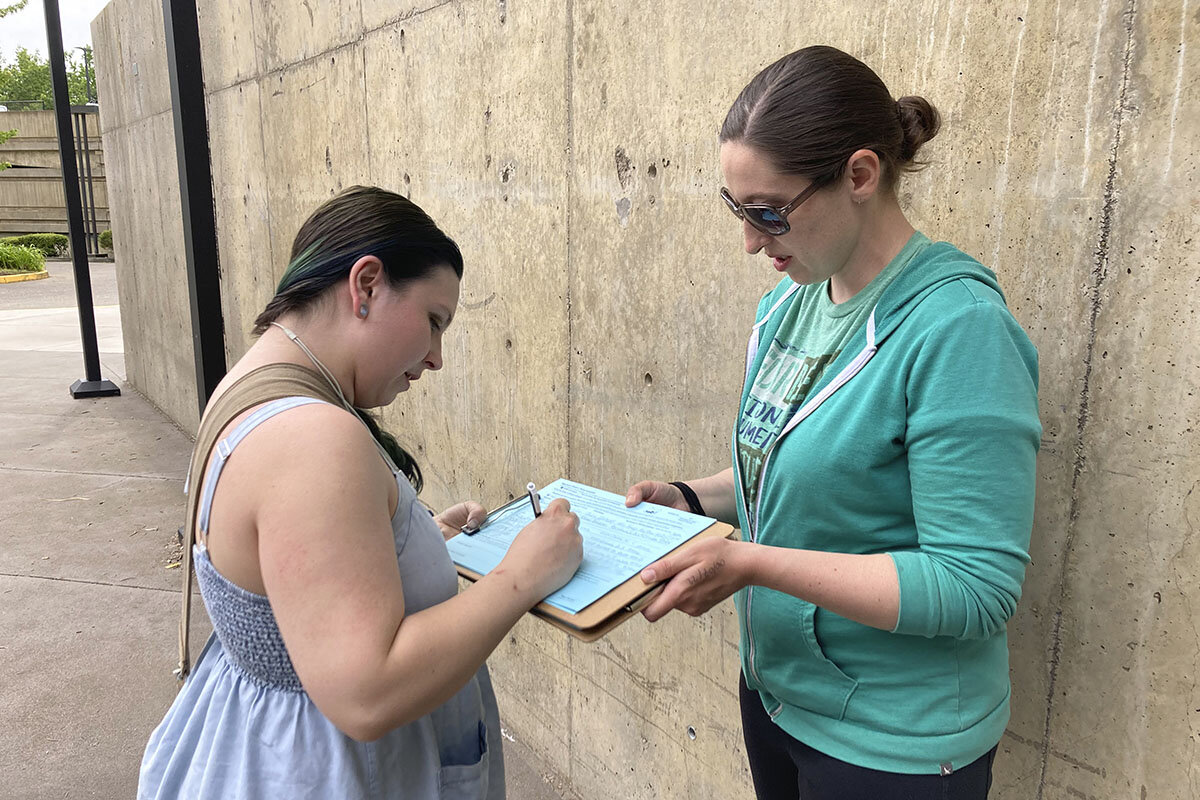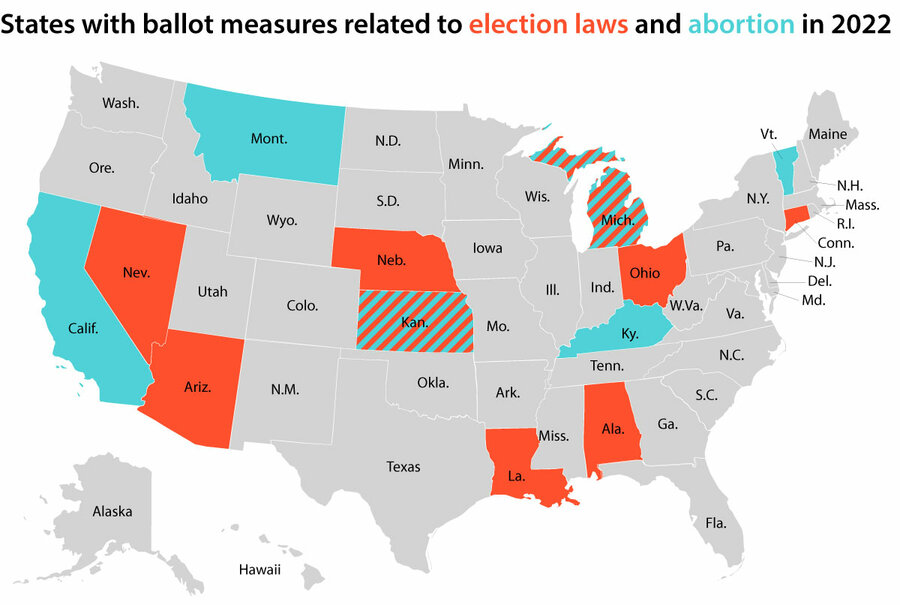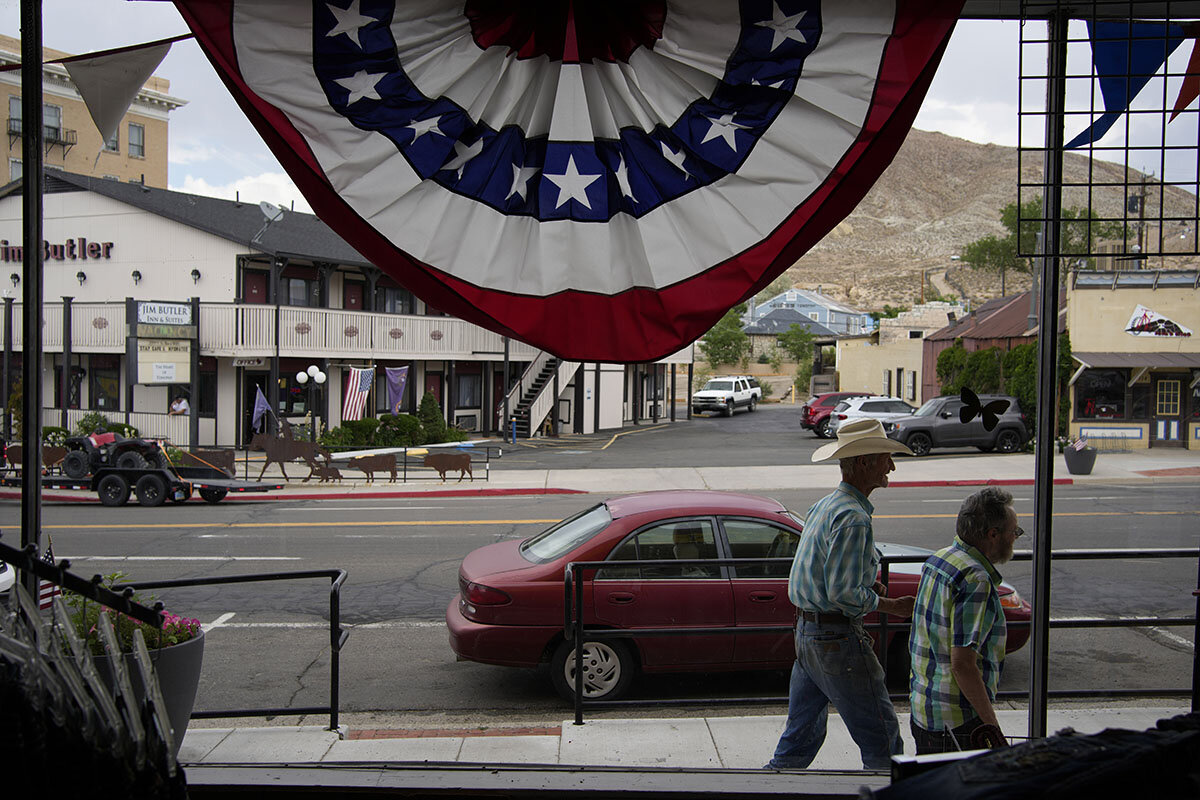From voting to abortion, ballot measures could have big impacts
Loading...
| Washington
This year’s midterm elections will determine which party controls Congress, multiple governorships, and different statewide offices. But on Nov. 8, voters won’t just be electing officials to govern for them. They’ll also be making some crucial policy choices themselves.
More than 130 statewide ballot measures, spread across 50 states, could prove unusually consequential this year. In many states, the public will be voting on new election laws. There are also a record number of measures on abortion, just over four months after the Supreme Court overturned Roe v. Wade.
In multiple states, ballot measures themselves are, well, on the ballot – with critics calling them unrepresentative and often misleading. The ease of passing future such measures could come down to votes this November.
Why We Wrote This
State ballot measures are a direct form of democracy – allowing voters themselves to weigh in on issues. This year’s may be particularly consequential, shaping everything from abortion policy to election laws to ballot measures themselves.
What are ballot measures?
Primarily, they include ballot propositions and initiatives. In the former, the state legislature proposes a policy change directly to the public on the November ballot. In the latter, a policy idea originates with the public – clearing a required number of signatures – and is then voted on statewide.
Twenty-four states permit ballot initiatives, says Joshua Dyck, director of the Center for Public Opinion at the University of Massachusetts, Lowell. Of the 140 statewide ballot measures this year, 110 are propositions and only 30 are initiatives – continuing a downward trend since the pandemic.
What are the most important ballot measures this year?
Voters in different states will get to weigh in directly on everything from legalizing marijuana to sports betting to tax policy. Two of the biggest issues cropping up in multiple places are abortion and election laws.
Since the Supreme Court’s June decision in Dobbs v. Jackson, overturning the federal right to an abortion, states have been resetting their policies. This year there will be a record-high six abortion-related ballot measures. One already took place in Kansas – where 59% of voters said no to an amendment that would have removed protections for abortion rights from the state constitution.
California, Vermont, and Michigan are all deciding whether to add abortion rights to their state constitutions. Earlier this year in Michigan, courts froze the state’s existing legislation on abortion: a no-exception ban passed in 1931. The issue is clearly motivating Democratic voters in the state, says Daniel Smith, an expert on direct democracy at the University of Florida. But it’s unclear whether that will help Democratic candidates much, he adds.
“Voters may be able to have their cake and eat it too,” says Professor Smith, with pro-choice Michiganders feeling like they can safely vote Republican if abortion rights seem likely to be secured.
The 12 ballot measures covering state election laws could also have enormous impact, coming just two years after the contentious 2020 presidential election, and will help shape the process in 2024.
Experts say it’s not so much the number of measures that’s significant – 12 is “a little high but not breaking any records,” says Mandy Zoch of the National Conference of State Legislatures. Rather, it’s the scope: “What’s different this year is that a lot of these election measures are really big ones.”
Nevada is considering becoming the third state in the U.S. – following Alaska and Maine – to use ranked-choice voting for congressional and certain statewide offices (the measure would require approval this year and again in 2024).
Connecticut is deciding whether to add no-excuse early voting to its constitution. If a measure in Michigan passes, the state constitution would guarantee some voter access policies – like early voting and prepaid stamps. Elsewhere, Arizona and Nebraska have measures on voter ID requirements, while Ohio – followed by Louisiana a month later – has a measure that would ban voting by unauthorized immigrants.
Are ballot measures effective tools?
In a way, voters will be considering that question, too. Among Arizona, Colorado, South Dakota, and Arkansas, this year there will be six ballot measures to reform the ballot measure process.
Most of the measures would make initiatives more difficult to pass – generally by raising the threshold required for passage from, say, a simple majority of 50% to a supermajority of 60%. South Dakota already voted against its measure to raise the required majority for tax-related initiatives.
Republicans have historically leveraged ballot initiatives more effectively than Democrats have, but the GOP now dominates many state governments – and some red states are trying to put guardrails on the process.
“The general takeaway is the party in control of the state government tends to despise the initiative process,” says the University of Florida’s Professor Smith.
That doesn’t mean guardrails are necessarily bad, however.
Professor Dyck’s research suggests that voters rarely understand the often-complicated language of most ballot measures. The electorate can also differ enormously from cycle to cycle – with participation often falling significantly during nonpresidential years – meaning a majority of the vote might not reflect true majority will.
For some measures, voters can rely on certain cues – like a party campaign or endorsements – to make up their mind, says Craig Burnett, a political scientist at Hofstra University. But that’s not the case for most, he says, including some of the most complicated and consequential measures.
Still, with a conservative U.S. Supreme Court giving states more control over matters like abortion and gun rights, state ballot measures can act as a check on the legislature.
“It’s not perfect by any means – but neither is the state legislative process,” says Professor Smith.










